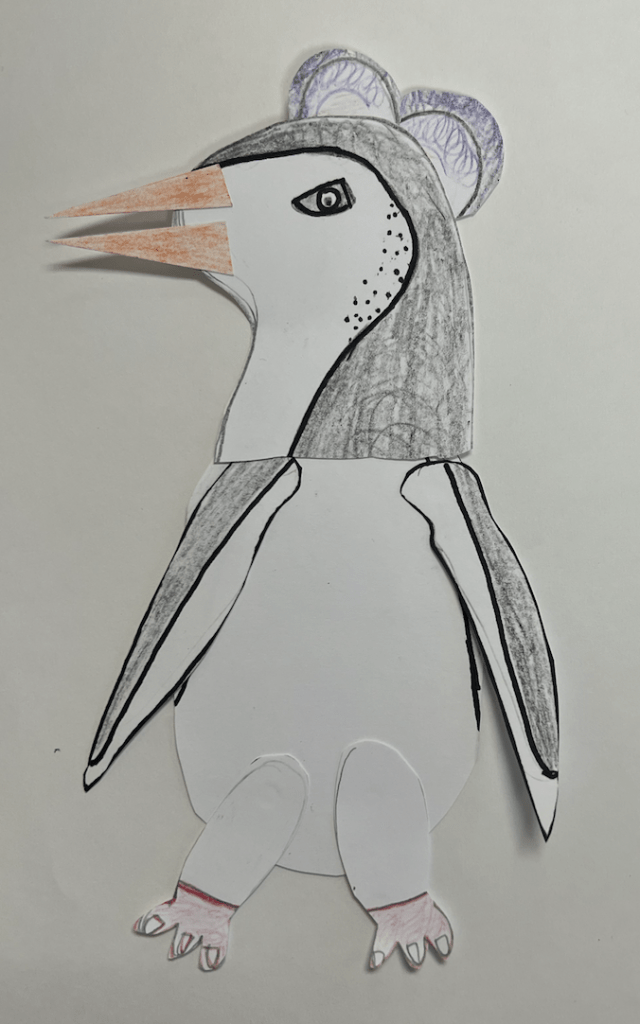Step-By-Step Instructions:
- Sketch your puppet design
- Redraw each section separate from each other and create enough room for the connections
- Note of which pieces will be in front or behind and adjust accordingly by creating tabs. I.E. If it is a “behind” piece, make sure it has extra space for the connector than in your original sketch.
- Cut each of the individual sections, leaving the tabs noted above on the behind pieces to attach to the front pieces.
- Color each piece and add details before moving forward. This step will be difficult to do once the puppet is assembled.
- Hole punch the tabs and cut out circles larger than the whole punch.
- Flip each pieces over and place the bottom piece on top of the top piece.
- Add a SMALL dot of glue in the middle of the hole punch and place the larger circle created in step 5 on top of the dot of glue.
- Firmly press down on the circle using the end blunt of a pen or sharpie.
- Repeat with every piece.
- Test each piece by twisting at the hinges.
Age Level Adaptations: A student of any age can do this project, provided they receive instruction and tools appropriate to their age level. Younger students benefit from using wider appendages compared to the thin ones we do as older students. This provides more space for the glue to be moved by the younger-student-with-less-motor-skills and still create a working hinge. For older students, increase the amount of hinges that they are required to have per puppet as this will require more creativity on hinge size and placement.
Project Idea:
One project that engages students with puppetry is making animal puppets out of popsicle sticks (first list item). This project gives a lot of creative freedom to students but does not require a massive amount of technical skill, meaning this project would be a good launching point for first time puppeteers. Another project idea would be up-cycling cereal boxes into monsters (third list item). A third project that would help create real-time characters in a unique way are rubber glove puppets where each finger is a character and you can place a world or set in the palm (eighth list item).
Professional Artist:

Cultural Tie-In: Online or in a book, find at least one example of a culture in which
traditional artisans create puppets that are of importance to that culture. Describe the type of puppetry: Where is it from? What does it look like? Does it have any specific uses in the culture? Are there specific people who make it? Include any other pertinent information about the art-form and/or the people who make it. Include at least two representative images with links or citations for where you found it.
The African American community is experiencing a movement of using puppetry as means of expressing identity and promoting healing. This movement was celebrated earlier this year in 2021 by the Library of Congress, sponsored by the American Folklife Center’s Benjamin Botkin Lecture Series. The article cited below states “Dolls and puppets presented by the artists [at the event] are described by the artists as having a function of healing both physical and emotional hurts, expressing a positive African American identity through art, and exploring African and African American history. This is not only true for the makers but for those who see them or acquire them to take into their own lives.”


https://blogs.loc.gov/folklife/2021/02/african-american-art-dolls-and-puppets/
Artwork Example:
